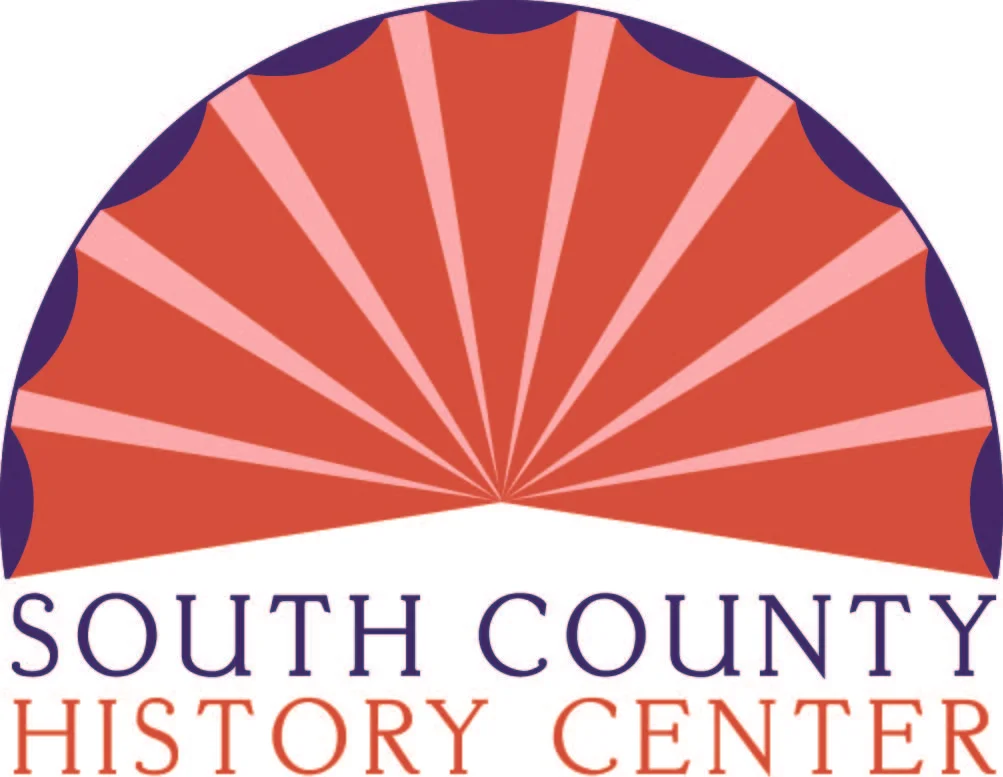How did the community react to the mural?
The Mural is Installed at the Post Office
The Providence Journal covered the installation of The Economic Activities of the Narragansett Planters in its December 6th, 1939 issue.
On December 5th, 1939, Ernest and Ernestine Baker arrived in Wakefield to install the mural at the post office. The mural measures 14’ 4” wide by 6’ high; given its size the mural was most likely rolled up for transportation. The canvas was not affixed to a wooden frame; rather, it was attached directly to the wall with a strong adhesive. Standing on scaffolding in the early hours of the morning on December 6th before the post office opened for the day, Baker attached the mural to the wall above the lock boxes. A Providence Journal reporter was present, snapping pictures of Baker while he worked, and interviewing him afterwards. The headline for the article appearing in the Providence Sunday Journal describes the mural as “airing South County’s past” and “bring[ing] out into hard daylight those 18th century days when South County Planters counted their wealth in slaves and smuggled rum.” Although the article’s headline suggests that some viewers of the mural may be made uncomfortable by the subject it depicts, the article’s text does not suggest there was any public controversy among the community members about the mural. The mural was considered a fine work of art by the community, as an article from the Westerly Sun suggests.
Exhibit Navigation
1: Introduction
2: Ernest Hamlin Baker
3: Great Depression & New Deal
4: Treasury Section of Fine Arts
5: Baker’s Commission & Research
6: Slavery in Southern Rhode Island
7: Baker’s Artistic Process
8: The Finished Mural
9: Wakefield Post Office
10: Why the Mural Matters
11. Share Your Thoughts
12. Further Reading
The mural as it appeared above the lock boxes in the Wakefield Post Office, 1983. The mural received coverage in various art history articles about New Deal artwork in Rhode Island. the new paper, 1983.
Community Perceptions of the Mural
As all good art does, the mural evoked a wide array of responses from local residents. The dynamic, turbulent energy of the rolling landscape and waves, as well as the piece’s rich details captured the attention and evoked emotional responses from many visitors to the post office. While some residents found the painting impressive and beautiful, some were made uncomfortable by the subject matter, and some residents did not even realize it portrayed slavery that was part of the local history.
“I remember being awestruck by the mural every single day. As a child, the mural made me feel that something dark, sinister and wrong was going on, but I had no idea what that might be. At the time, I had no idea what the mural was depicting.”
The Robinson St. Post Office Closes
The mural escaped major controversy, though, for the duration of its display at the Robinson street post office; the only major public debate around it occurred at the time of the post office’s closure. In 1999, the US Postal Service built a new post office on Kingstown Road, and offered the Robinson street building for sale to private buyers. After the sale of the building to a consignment shop owner, the US Postal Service’s Fine Arts Division required that mural be moved to a building that was not a privately owned business and that was open to the general public. The Fine Arts division put out a call for bids from museums, town halls, libraries, and other public buildings around the county and state to borrow the mural for long-term display.
A 2003 reception for the installation of the mural, attended by local community leaders and U.S. Representative Jim Langevin, who were instrumental in advocating that the mural be loaned to the Society. south county history center collections.
The Mural Finds a New Home
USPS considered loaning the mural to either Heritage Harbor (then planning a museum in Providence, which did not come to fruition) or the Pettaquamscutt Historical Society, which now operates as the South County History Center. If a loan was not arranged, the U.S.P.S. would ship the mural back to its main collections storage facility. Many residents of southern Rhode Island wrote editorials to advocate for the mural staying close by; local, state, and federal officials and representatives of Rhode Island also lobbied the postal service directly for the mural to stay in South Kingstown, as it was an important work to the community and where it could be best interpreted in historical context. After over a year of consideration, the U.S.P.S. granted a 25-year loan of the mural to the Pettaquamscutt Historical Society, now the South County History Center, where a newly-furnished exhibit room was devoted to interpreting the mural and 18th-century history of southern Rhode Island.
Banner Image: Baker’s mural as published in LIFE Magazine, January 27, 1941
This exhibit is made possible through major funding support from the Rhode Island Council for the Humanities. The Council seeds, supports, and strengthens public history, cultural heritage, civic education, and community engagement by and for all Rhode Islanders.


